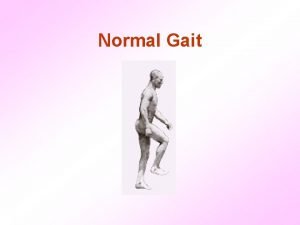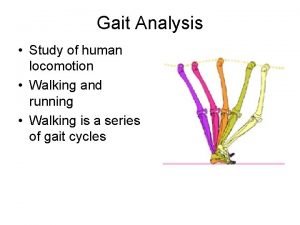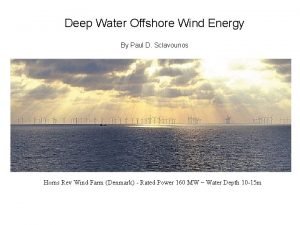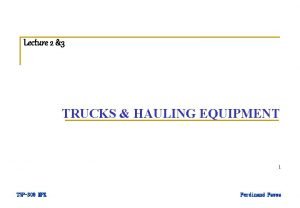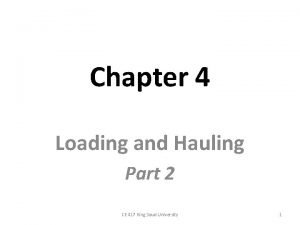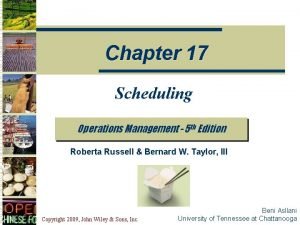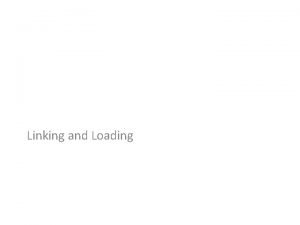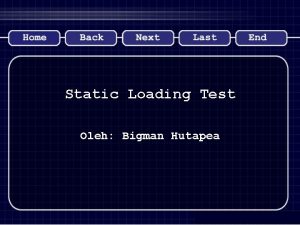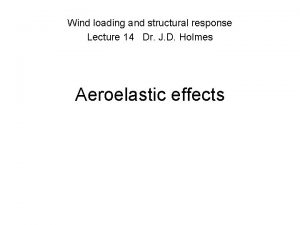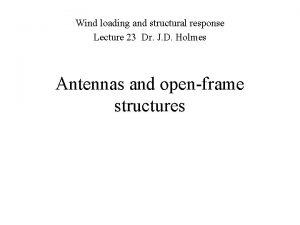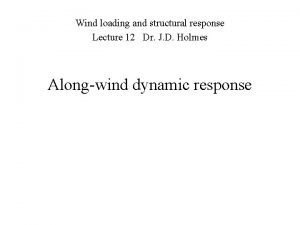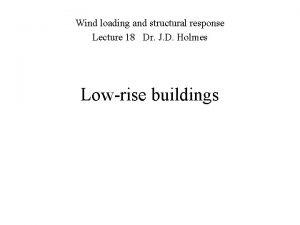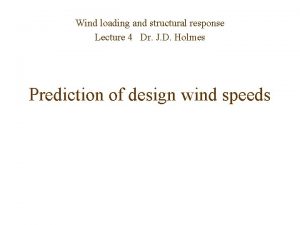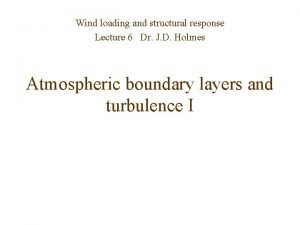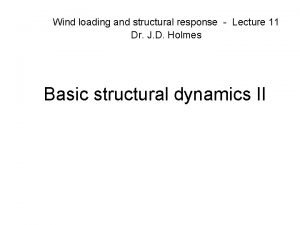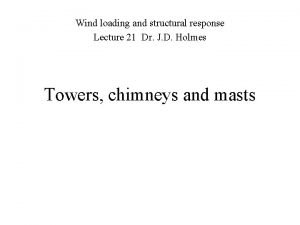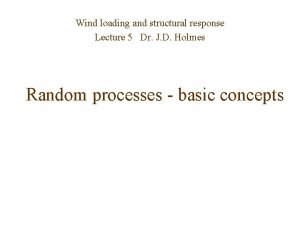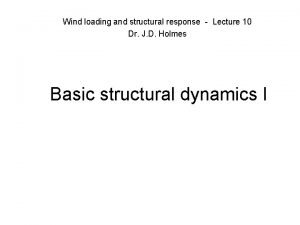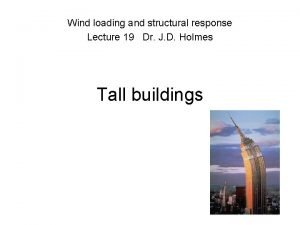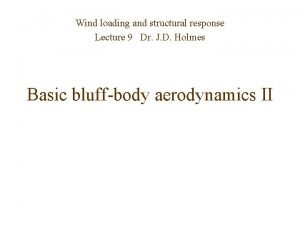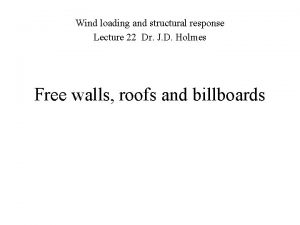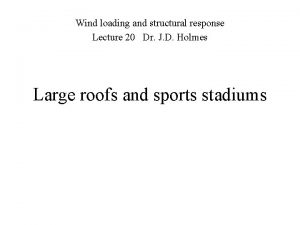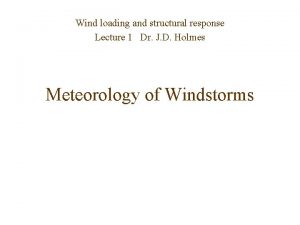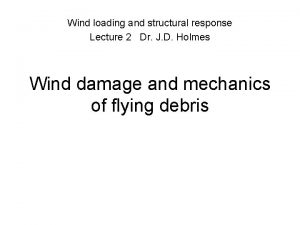Wind loading and structural response Lecture 15 Dr

















- Slides: 17

Wind loading and structural response Lecture 15 Dr. J. D. Holmes Fatigue under wind loading

Fatigue under wind loading • Occurs on slender chimneys, masts under vortex shedding - narrow (frequency) band • Occurs on steel roofing under wide band loading • May occur in along-wind dynamic response - background - wide band - resonant - narrow band

Fatigue under wind loading • Failure model - based on sinusoidal test results Nsm = K N = cycles to failure s = stress amplitude K = a constant depending on material m = exponent between 5 and 20

Fatigue under wind loading • Failure model - based on sinusoidal test results Typical s-N graph :

Fatigue under wind loading • Failure model Miner’s Rule : ni = number of stress cycles at given amplitude Ni = number of stress cycles for failure at that amplitude Assumes fractional damage at different stress amplitudes adds linearly to give total damage No restriction on order of loading ‘High-cycle’ fatigue (stresses below yield stress)

Fatigue under wind loading • Narrow band random loading : s(t) time for narrow-band random stress s(t), the proportion of cycles with amplitudes in the range from s to s + s, = fp(s). s fp(s) is the probability density of the peaks total number of cycles in a time period, T, is o+T o+ is the rate of crossing of the mean stress ( natural frequency)

Fatigue under wind loading • Narrow band random loading : total number of cycles with amplitudes in the range s to s, n(s) = o+T fp(s). s fractional damage at stress level, s : since N(s) = K/sm

Fatigue under wind loading • Narrow band random loading : By Miner’s Rule : Probability distribution of peaks is Rayleigh : (Lecture 3) substituting, damage (x) is the Gamma Function EXCEL gives loge (x) : ( n! = (n+1) ) GAMMALN()

Fatigue under wind loading • Narrow band random loading : Fatigue life : set D =1, rearrange as expression for T Only applies for one mean wind speed, U, since standard deviation of stress, , varies with wind speed need to incorporate probability distribution of U

Fatigue under wind loading • Wide band loading : More typical of wind loading Fatigue damage under wide band loading : Dwb= Dnb = empirical factor Lower limit for = 0. 926 - 0. 033 m (m = exponent of s-N curve)

Fatigue under wind loading • Effect of varying wind speed : Standard deviation of stress is a function of mean wind speed : = A Un Probability distribution of U : (Weibull) Probability of exceedence

Fatigue under wind loading • Effect of varying wind speed : Probability density of U (Weibull) : The fraction of the time T during which the mean wind speed falls between U and U+ U is f. U(U). U. Amount of damage generated during this time :

Fatigue under wind loading • Effect of varying wind speed : Total damage for all mean wind speeds :

Fatigue under wind loading • Fatigue life : Lower limit (based on narrow band vibrations) : Upper limit (based on wide band vibrations) ( < 1) : o+ (cycling rate or ‘effective’ frequency) Can be taken as natural frequency for lower limit; 0. 5 x natural frequency for upper limit

Fatigue under wind loading • Example : m = 5 ; n = 2 ; k = 2; 0+ = 0. 5 Hertz K = 2 x 1015 [MPa]1/5 ; c = 8 m/s ; A = 0. 1 from EXCEL : GAMMALN() function = 0. 926 - 0. 033 m =0. 761

Fatigue under wind loading Sensitivity : Fatigue life is inversely proportional to Am - sensitive to stress concentrations Fatigue life is inversely proportional to cmn - sensitive to wind climate

End of Lecture 15 John Holmes 225 -405 -3789 JHolmes@lsu. edu
 Static class loading and dynamic class loading
Static class loading and dynamic class loading Perbedaan granit single loading dan double loading
Perbedaan granit single loading dan double loading Medical term for normal gait
Medical term for normal gait Trendelenburg gait treatment
Trendelenburg gait treatment 01:640:244 lecture notes - lecture 15: plat, idah, farad
01:640:244 lecture notes - lecture 15: plat, idah, farad Structural dynamics of deep water offshore wind turbines
Structural dynamics of deep water offshore wind turbines Kurshalter
Kurshalter Natural response and forced response
Natural response and forced response What is natural response
What is natural response A subsequent
A subsequent Factors affecting haulers productivity
Factors affecting haulers productivity Health and safety injection moulding
Health and safety injection moulding Hauling part
Hauling part Scheduling rules operations management
Scheduling rules operations management Azure sql data warehouse
Azure sql data warehouse Static vs dynamic linking
Static vs dynamic linking Ffb loading ramp
Ffb loading ramp Static loading test adalah
Static loading test adalah


